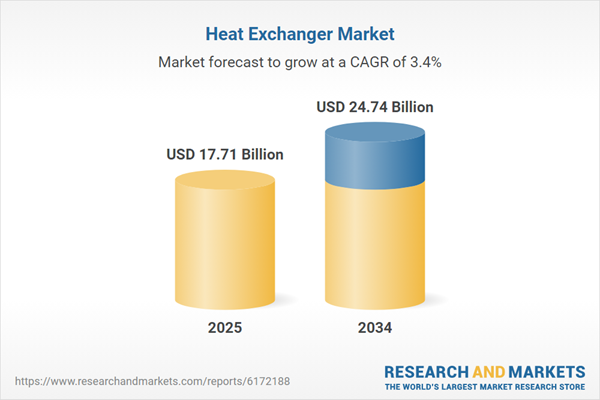The Asia-Pacific to Provide Significant Growth Opportunities to the Heat Exchanger Industry
Region-wise, Europe accounts for a significant share in the industry owing to the growing focus on effective utilisation of waste heat from industrial processes. This, coupled with the stringent environmental regulations, is resulting in increased installation of heat exchangers in the region. Meanwhile, the Asia-Pacific is expected to witness a robust growth in the forecast period owing to the rapid industrialisation and urbanisation across the region and the growth of the chemical and power generation industries. There has been a rise in demand for heat exchangers in emerging economies like China and India. This is contributing to the growth of the heat exchanger industry. The increasing energy demand and the growing investments to upgrade the existing energy infrastructure in these nations are expected to aid the regional industry growth in the forecast period.Heat Exchanger: Market Segmentation
Heat exchangers refer to a system that is designed to facilitate the transfer of heat between two or more fluids. These systems can be utilised in both cooling and heating processes. They find applications across various industries like oil and gas, power generation, automobile, and chemical, among others to effectively manage the transfer of energy from one medium to another.By type, the market is divided into:
- Shell and Tube
- Plate and Frame
- Air Coolers
- Others
Based on material, the industry can be bifurcated into:
- Sheet
- Non-Sheet
On the basis of application, the industry can be categorised into:
- Chemicals
- Oil and Gas
- Power Generation
- HVAC
- Automobile
- Pharmaceuticals
- Food and Beverage
- Pulp and Paper
- Others
The regional markets for the product include:
- North America
- Europe
- Asia-Pacific
- Latin America
- Middle East and Africa
With the growing demand for sustainable energy development, there has been an increasing focus on effective utilisation of waste heat generated from various industries. This is driving the growth of the heat exchanger industry globally. The increased construction activities across residential and commercial sectors and the rapid industrial growth, particularly in emerging economies, are driving the demand for heat exchangers. Further, the global capacity expansions across various end use sectors like chemicals, oil and gas, and power generation, among others, is further contributing to the industry growth. Over the forecast period, the favourable government initiatives and technological innovations are expected to further propel the industry growth.
Key Industry Players in the Global Heat Exchanger Market
The report gives a detailed analysis of the following key players in the global heat exchanger market, covering their competitive landscape, capacity, and latest developments like mergers, acquisitions, and investments, expansions of capacity, and plant turnarounds:- Danfoss A/S
- Güntner GmbH & Co. KG
- Chart Industries, Inc.
- General Electric Co.
- Heatmaster BV
- Barriquand Group
- Others
Table of Contents
Companies Mentioned
The key companies featured in this Heat Exchanger market report include:- Danfoss A/S
- Güntner GmbH & Co. KG
- Chart Industries, Inc.
- General Electric Co.
- Heatmaster BV
- Barriquand Group
Table Information
| Report Attribute | Details |
|---|---|
| No. of Pages | 180 |
| Published | August 2025 |
| Forecast Period | 2025 - 2034 |
| Estimated Market Value ( USD | $ 17.71 Billion |
| Forecasted Market Value ( USD | $ 24.74 Billion |
| Compound Annual Growth Rate | 3.4% |
| Regions Covered | Global |
| No. of Companies Mentioned | 7 |









